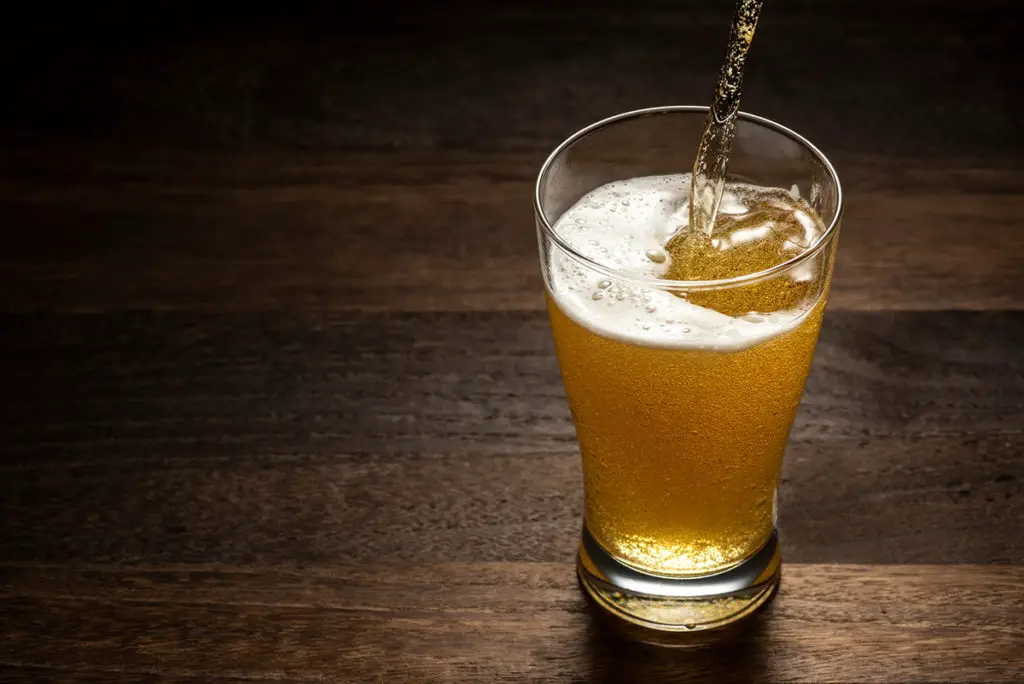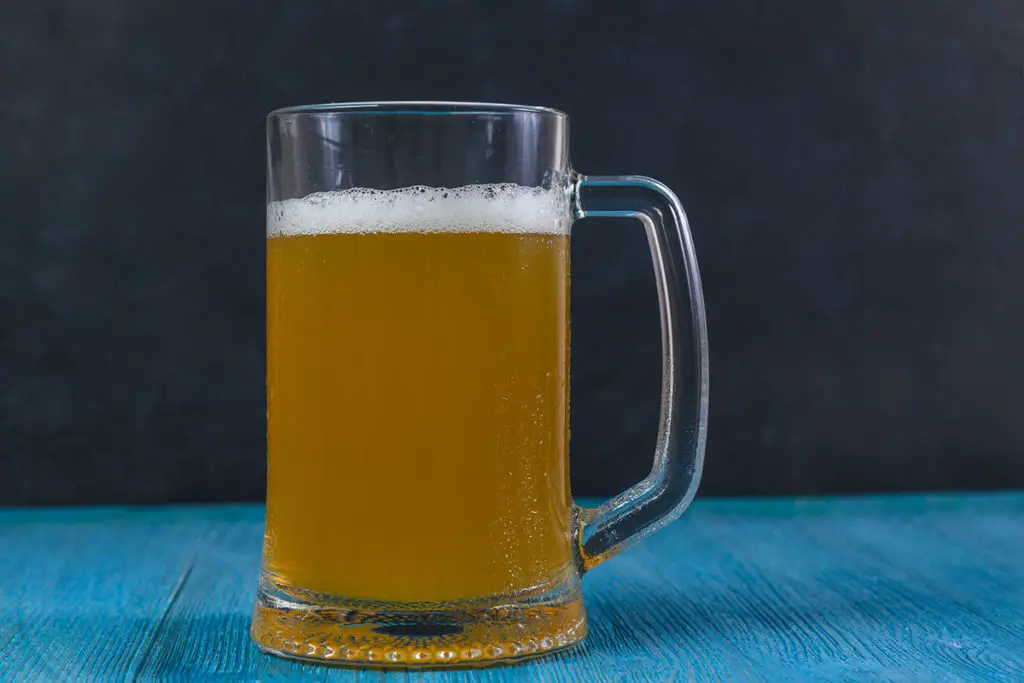If you’ve been looking for a new beer to try, there’s a good chance you may have come across helium-infused beer. The idea seems relatively straightforward – helium mixed in beer – but if you’ve ever tried to find it in a grocery store, you may have found it isn’t available. So, is helium-infused beer simply very rare, or is it just complete fiction?
Helium-infused beer is complete fiction and doesn’t exist. The concept of this beer comes from viral videos that claimed to sell helium-infused beer, but both were April Fool’s Day pranks. Helium-infused beer isn’t available in the market, and it’s nearly impossible to make this beer.
In this article, I’ll examine the history of helium-infused beer and explain why this type of beer isn’t available commercially. I’ll also explain why the idea of helium-infused beer is so intriguing to beer lovers.
Understanding Helium-Infused Beer
As mentioned above, helium-infused beer is exactly what it sounds like. It is a beer that has been “flavored” by helium.

BEER DROP: Boxes of beer from Award-winning microbreweries → Join The Club
However, as any high school student can tell you, helium is odorless and, significantly, tasteless gas. So, if helium offers no flavor benefits to beer, why is the idea of beer with added helium so interesting?
The answer is the effect that helium has on a person’s voice. As you can see in the clip from the television show The Big Bang Theory below, breathing helium has been shown to have a noticeable effect on a person’s voice.
Here’s a YouTube clip from the popular show The Big Bang Theory showing the effect of helium on a person’s voice:
Essentially, it changes your voice, often making it sound higher-pitched and squeaky.
The idea of helium-infused beer plays to these principles, as people believe it would be a fun way to alter the pitch of their voice. It would be a great way to play a prank on friends, and you’d be able to have a delicious glass of beer as part of the equation.
The idea of this type of beer is founded on the fact that most commercial breweries infuse their drinks with carbon dioxide to create carbonation and make their beers frothy. The idea is that a helium-infused beer would be produced by simply replacing the CO2 infusion process with a helium infusion process.
The yeast reaction would still create carbon dioxide in the beer, so the drink would be as frothy as beer lovers expect it to be, and all that would change would be the addition of the helium.
Where Helium-Infused Beer Came From
The idea of helium-infused beer comes from a pair of viral videos from 2014, each claiming to be selling a new helium-infused beer. It got a new lease on life the following year when a set of YouTubers released a video on their channel claiming to rate a helium-infused beer.
HeliYUM
The more popular of the initial two videos were released by the beer brand Samuel Adams. In it, founder Jim Koch claims to have created an “extreme new beer” infused with helium, or HeliYUM. Koch claims that this beer has a lighter mouthfeel and that the caramel flavors come through better when helium is added to the beer.
Additional flavor notes from the hops include:
- Floral
- Herbal
- Grassy
- Piney
- Citrusy
He claims the beer is slightly dry and has an “ultra-smooth finish,” aside from, of course, altering the pitch of the drinker’s voice.
You can view the YouTube video advertisement for the beer here:
Stochasticity: crHeam Ale
On the same day that the Samuel Adams video was published, the smaller Stone Brewing Company released a YouTube video about their Stochasticity project, centered around finding new and unique brewing techniques.
The video claims that the first beer to be released through this project is crHeam Ale, a beer infused with helium. The video claims the idea behind the drink was infusing beer with one of the noble gases, and helium was the safest option.
Like the HeliYUM video, it claims a better mouthfeel experience by adding helium.
It also claims that drinking helium offers an “aggressive sensory experience,” aside from, once again, altering the voice of the beer drinker. Much of the video is dedicated to explaining the production process for a helium-infused beer.
You can view the YouTube video advertisement for the beer here:
Both videos were released on 1st April 2014. A year later, on 1st April 2015, German beer YouTubers Die BierProbierer released a video where they claimed to review Samuel Adams’ HeliYUM beer.
Here’s the YouTube video:
This video proved to be more popular than the original Sam Adams advertisement, once again sparking a desire for helium-infused beer.
The Truth About Helium Beer
So, given the fact that two breweries claim to sell helium beers and YouTubers have claimed to review one of them, why is this type of beer unavailable for purchase?
As mentioned above, helium-infused beer doesn’t exist.
As immediately identifiable from the dates on which the three viral videos that contributed to the popularity of helium-infused beer were published, the idea of this type of beer was an April Fool’s Day prank.
Sam Adams and Stone Brewing Company appear to have come up with the idea for the prank independently. However, the fact that two unrelated breweries were promoting the same type of beer definitely helped convince people that it was real.
The HeliYUM beer specifically convinced many people of its existence. Part of the reason for its popularity was its revival by Die BierProbierer in 2015. However, the review mentioned above was simply another prank, this time played out on April Fool’s Day 2015.
Why Helium-Infused Beer Does Not Exist
Given the popularity of the idea of helium-infused beer, it’s understandable to wonder why the April Fool’s Day pranks have not led to this type of beer actually being produced by breweries.

The answer to this question is relatively simple, which is that helium-infused beer is nearly impossible to make.
The main reason for this is that helium has very low solubility in water. In fact, it’s 700 times less soluble than CO2. Because the gas is very difficult to infuse into water, it’s equally challenging to infuse into beer. Since water is the main ingredient in beer, this is the reason for this difficulty.
As you can see in the following YouTube video, it is possible to infuse the beer with helium:
Making helium beer is very similar to making beer with nitrogen, and nitrogen-infused beer is available. However, there are still issues preventing helium-infused beer from being available commercially, including:
- Helium is in short supply. As the video above points out, the scientific community is facing a lack of helium, and existing helium stores are needed for more important scientific instruments. Helium-infused beer is pretty low down the totem pole of things to do with helium.
- Like nitrogen-infused beer, helium-infused beer would be non-carbonated, less acidic than regular beer, and creamier and richer. So, the only way helium beer would stand out is if it changed a person’s voice. Unfortunately, unlike inhaling helium, drinking the gas does nothing to your voice, which means there’s no advantage offered by infusing beer with helium over existing brewing methods.
Final Thoughts
Helium-infused beer sounds appealing.
However, there’s no truth to the yearly videos that claim to be selling beer that can change your voice. Most videos are April Fool’s Day pranks, and other videos are also jokes, just played on other days of the year.
While you can make helium-infused beer, it’s difficult and impractical. Helium is in short supply and needed for more important scientific research. Additionally, when helium-infused beer is made, it doesn’t change your voice and is relatively similar to existing nitrogen-infused beers.
If you encounter a video selling helium-infused beer, you can be guaranteed that it’s a joke.
